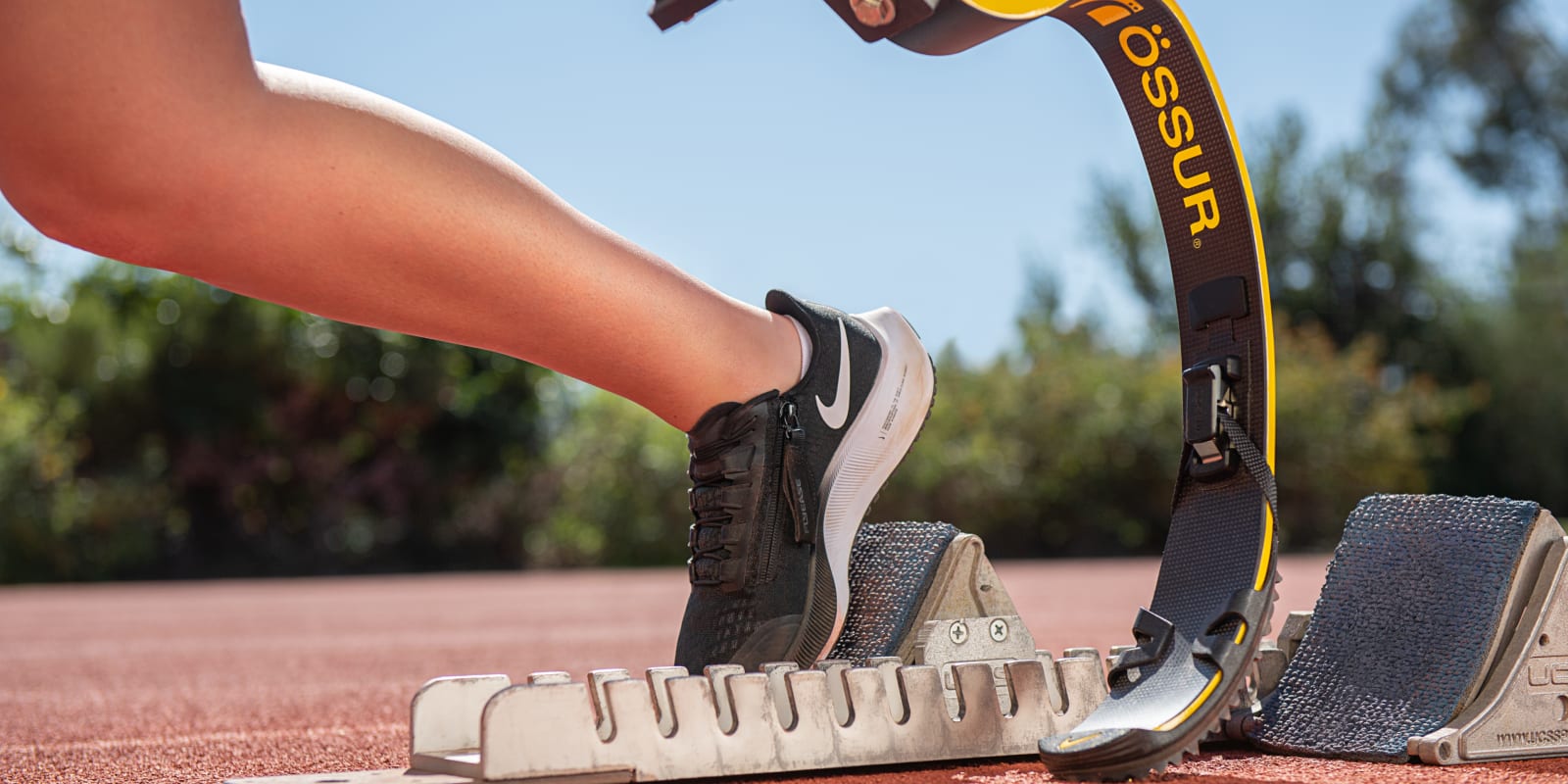Össur Launches New, Next-Generation Cheetah® Running Prosthesis
Iconic ‘Gold-Standard’ Running Blades Feature Refined Designs And Are Specifically for Designated Athletic Activities
Össur (Nasdaq: OSSR), a global leader in innovative prosthetic and non-invasive orthopaedic technologies, is launching three new models of its iconic Cheetah sports prosthesis, which have been designed for amputee athletes who are participating in specific athletic applications, including sprinting, distance running, and long jumping.
Össur’s Cheetah® is a J-shaped, carbon fiber prosthetic sports foot with a distinctive curved design that was modeled on the hind leg of the world’s fastest land animal. Since its introduction in 1996, the Cheetah has been considered the “gold standard” in prosthetic feet for elite and recreational amputee athletes worldwide.
“For nearly three decades, the innovative Cheetah prosthesis has been the choice of champion Track and Field para-athletes with limb loss or limb difference, and we are very pleased to be introducing these next-generation technologies as part of our continuing commitment to innovation excellence,” said Jon Sigurdsson, President and CEO of Össur.
“Just as an athlete’s shoe requirements differ according to their sport, we embraced the opportunity to fine-tune our designs, considering matters such as blade stiffness, shape and build height to optimally support athletes with lower limb loss or limb difference,” Sigurdsson said.
“We worked closely with many of the most renowned athletes competing today to develop these advanced designs, which are intended to address the specific requirements of sprinting, longer distance running and long jump. Whether the user is a world-class competitor at the top of their game or an everyday individual who simply wants to enjoy more dynamic physical activity, our goal in developing these next-generation Cheetahs is to help all athletes enjoy a life without limitations,” he said.
““We worked closely with many of the most renowned athletes competing today to develop these advanced designs, which are intended to address the specific requirements of sprinting, longer distance running and long jump. Whether the user is a world-class competitor at the top of their game or an everyday individual who simply wants to enjoy more dynamic physical activity, our goal in developing these next-generation Cheetahs is to help all athletes enjoy a life without limitations,” ”
Jon Sigurdsson, President and CEO of Össur
New Cheetahs Purpose-Designed for Specific Sports Applications
Made of a proprietary carbon fiber composite, the high-performance Cheetah prosthesis was designed to mimic the anatomical performance of an able-bodied runner’s foot and ankle joint. Studies have shown that the Cheetah is capable of absorbing and returning approximately 90% of the energy stored while the user is running. While this is an impressive metric, the Cheetah’s energy return to an amputee athlete is still substantially less than that experienced by an able-bodied runner, whose biological limb may return as much as 241% of stored energy [1].
Össur’s newest Cheetah sports prosthesis include:
The Cheetah® Xcel is a next-generation sports prosthesis that was specifically designed for explosive, short distance sprints of 100-200m, with proprietary design features intended to reduce the user’s running effort and facilitate increased speed from starting block to finish line. The carbon fiber blade features a more extreme curve and a dynamic shape that allows the foot to flex, giving a powerful energy kick. A long toe enhances push-off, while a plantar-flexed pylon supports forward progression.
The new Cheetah® Xceed was designed to be an ideal foot for athletes with unilateral (single) and bilateral (double) amputation who are participating in professional sports or recreational activities such as long-distance running. The Cheetah Xceed features a larger carbon blade intended to enhance shock absorption and reduce the user’s running effort.
The revolutionary Cheetah® Xpanse is the only available sport foot in the market that was specially designed for long jumping. Developed with the input of elite athletes, the blade was designed to facilitate a faster pace for the run-up and improved push-off, helping the athlete achieve maximum distance out of their jump. The dynamic shape allows the foot to flex aggressively for a powerful energy return and a plantar-flexed pylon intended to support forward progression. Its robust design, with a large carbon fiber blade, is intended to withstand the unique requirements of a heavier load, such as when an athlete lands, or is participating in other
high-endurance sports.
Össur, Nike R&D Teams Collaborate on Revolutionary SoleX Option
Athletes who choose the new Cheetah Xceed or Xcel models also have the option to select a new Nike SoleX, a proprietary removable sole that was developed in tandem between Össur’s engineers and the renowned R&D team at Nike. Inspired by Iceland’s extraordinary landscape and the para-athletes who wear Össur technologies, the durable, lightweight Nike SoleX features an interchangeable sole system that was designed to sit smoothly atop Össur Cheetah Xceed and Xcel running blades. A streamlined, one-latch attachment system allows the user to simply don, doff or change their sole.
In addition, the new Össur Cheetah Xpanse blade is available with a new, next-generation Nike Spike Pad 2.0 that was co-designed with Nike and provides specialized traction that has been optimized for performance on various running surfaces.
All Cheetah sports prostheses are suitable for individuals with above-knee (transfemoral) and below-knee (transtibial) amputations. They are available in customizable configurations and attachment options to accommodate such factors as an individual user’s weight, residual limb length, and foot alignment in relation to their running style. All of the new Cheetah models are available worldwide.
Citation
[1] Czerniecki, Joseph M., Andrew Gitter, and Carolyn Munro. "Joint moment and muscle power output characteristics of below knee amputees during running: the influence of energy storing prosthetic feet." Journal of biomechanics 24.1 (1991): 6367-6575.

